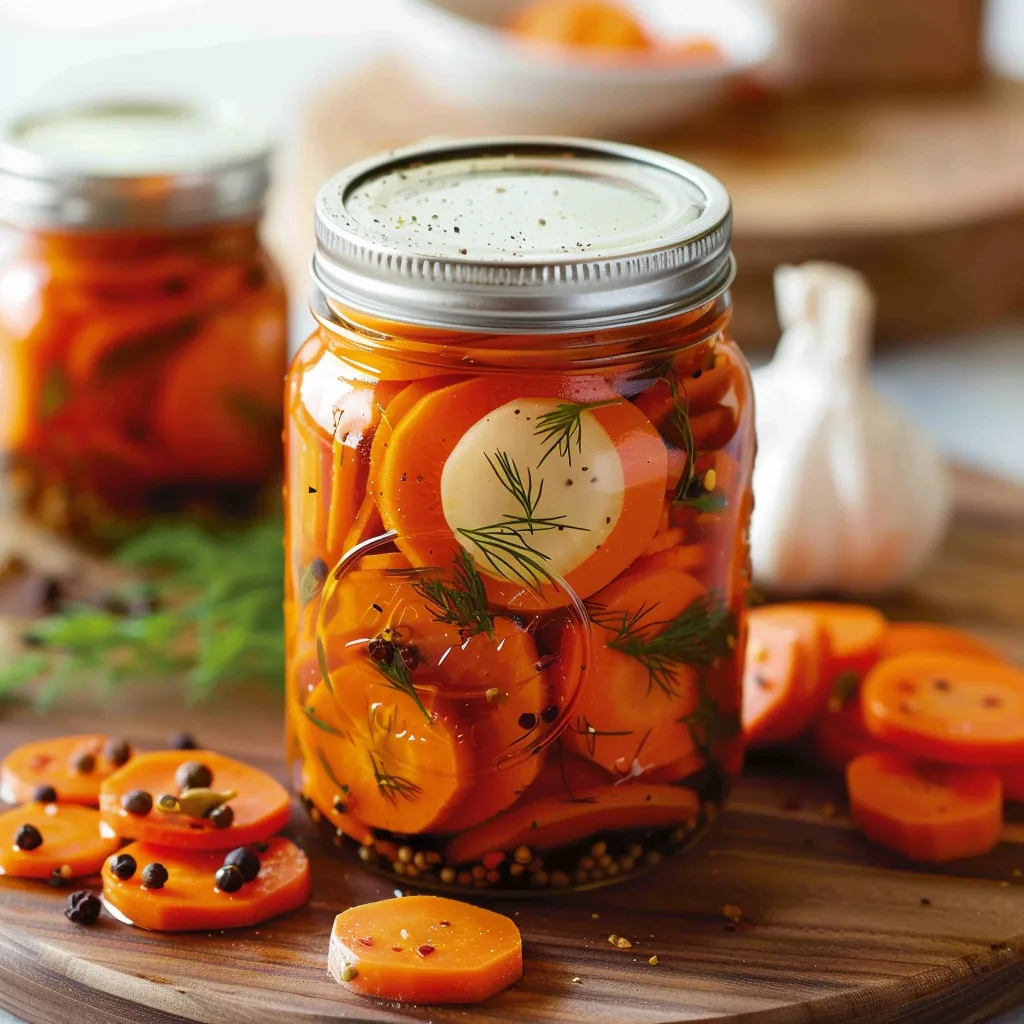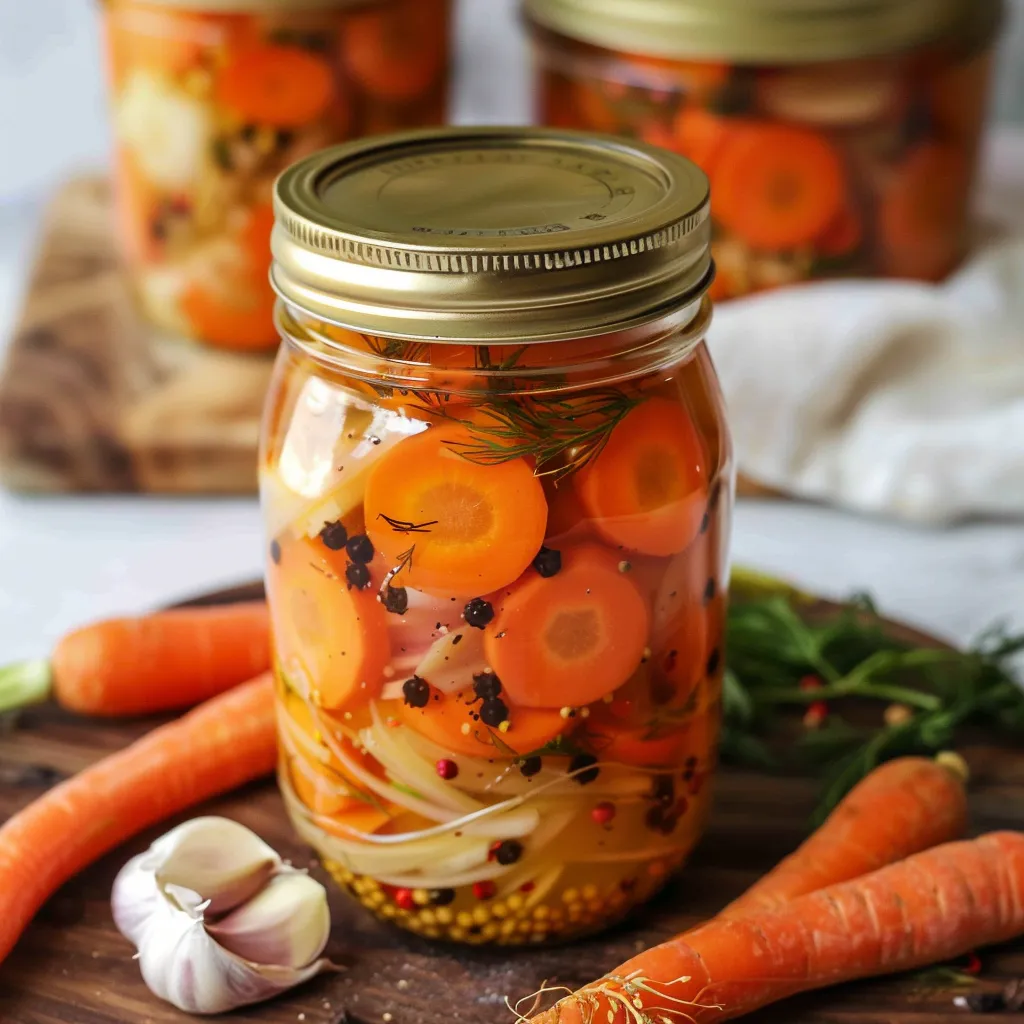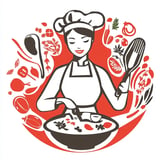 Pin to Favorites
Pin to Favorites
Pickled carrots transform ordinary vegetables into vibrant, tangy delights that brighten up any meal. The satisfying crunch paired with the perfect balance of acidity creates an irresistible addition to your culinary repertoire. These quick-pickled carrots require minimal effort yet deliver maximum flavor, making them an essential recipe for both novice and experienced home cooks looking to elevate everyday dishes with minimal fuss.
Last summer, I served these pickled carrots alongside grilled meats at a backyard gathering, and my typically vegetable-averse nephew couldn't stop sneaking them from the serving dish. The secret is in the balanced brine—not too sweet, not too sour—allowing the natural sweetness of the carrots to shine through while adding complexity that plain carrots simply don't have.
Essential Ingredients and Selection Tips
- Carrots: Choose firm, fresh carrots with vibrant color for the best texture.
- White Vinegar: Provides the sharp tang essential for pickling.
- Apple Cider Vinegar: Adds a subtle fruitiness and depth to the brine.
- Fresh Dill: Offers a bright herbal note that complements the carrots beautifully.
- Garlic: Slightly crushed cloves release more aromatic flavor into the brine.
- Black Peppercorns: Provide gentle heat and complexity to the final flavor.
- Kosher Salt: Dissolves well and provides a clean taste.
 Pin to Favorites
Pin to Favorites
Detailed Cooking Instructions
- Prepare Your Carrots:
- Scrub, peel, and slice into uniform ¼-inch thick coins or sticks.
- Blanch for Perfect Texture:
- Boil for exactly 2 minutes, then transfer to an ice bath.
- Prepare Your Pickling Brine:
- Simmer water, vinegar, salt, sugar, and garlic for 2 minutes.
- Prepare Your Pickling Jars:
- Clean pint-sized jars and layer with onion slices, black peppercorns, and dill.
- Pack Your Jars:
- Divide carrots evenly, leaving ½-inch headspace.
- Pour the Hot Brine:
- Cover carrots fully, tapping jars to remove air bubbles.
- Seal and Cool:
- Let jars cool at room temperature for 1 hour.
- Rest and Refrigerate:
- Refrigerate for at least 24 hours, with optimal flavor developing after 3-4 days.
- Adjust to Taste:
- Sample after 24 hours and tweak acidity or sweetness if needed.
The Rainbow Carrot Variation
Using heirloom carrots in shades of purple, yellow, and red creates a visually stunning pickle with subtle flavor differences. Layer them in the jar for maximum impact.
The Spice Cabinet Exploration
Experimenting with spices such as star anise, coriander seeds, or mustard seeds can yield unique pickled carrot variations that complement different dishes.
The Pickle Party
Hosting a 'pickle party' with friends has led to countless creative variations, with these pickled carrots always being the star of the spread.
Pickling As Preservation
Preserving garden carrots through pickling allows you to enjoy their peak-season flavors long after harvest, bringing a taste of summer into colder months.
The Perfect Gift
Packed in decorative jars with custom labels, these pickled carrots make for thoughtful housewarming or holiday gifts.
My grandmother's pickled carrots had a touch of honey instead of sugar—a variation I sometimes use to evoke childhood memories of her kitchen.
I've been making these pickled carrots for over a decade now, refining the recipe with each batch. Pickling has become more than a preservation method—it's a cherished tradition that connects me to my past while creating something delicious for the future.
 Pin to Favorites
Pin to Favorites
Frequently Asked Questions
- → Do I need to blanch the carrots before pickling them?
- Blanching helps the carrots absorb the pickling brine better and slightly softens them while maintaining crunch. If you prefer extra-crunchy pickles, you can skip blanching, but the flavor may take longer to develop.
- → Can I use other vegetables with this pickling recipe?
- Absolutely! This brine works wonderfully with radishes, cucumbers, cauliflower, or a mix of vegetables. Adjust blanching time or skip it depending on the vegetable's density.
- → Can I use dried dill instead of fresh?
- Yes, substitute each fresh dill sprig with about 1 teaspoon of dried dill. The flavor profile will be slightly different but still delicious.
- → Are these pickled carrots shelf-stable for pantry storage?
- No, these are refrigerator pickles and must be stored in the refrigerator. For shelf-stable pickles, you would need to use a proper canning method with sterilized jars.
- → How can I reduce the sodium content in these pickled carrots?
- You can reduce the salt to 1 tablespoon, though this will affect both flavor and preservation qualities. The pickles will still be tasty but should be consumed within 2 weeks.
